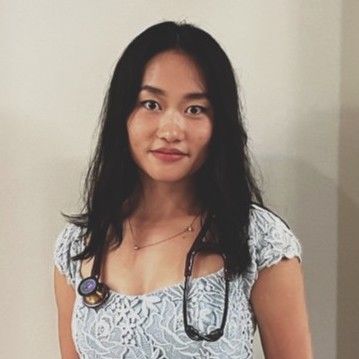News
Article
High-Income Countries Use More Actinic Keratosis Topicals Than Middle-Income Countries
Author(s):
In these data, investigators had investigated the international differences in topical AK medication implementation, including links to countries’ different economic statuses.
Heather J. Zhao, ScM
Credit: LinkedIn

Countries known to be high-income countries implement more grams per 1,000 population of topical actinic keratosis (AK) therapies (5-fluorouracil, imiquimod, and ingenol mebutate) than middle-income countries, according to recent findings.1
These conclusions on actinic keratosis treatment trends followed new research led by Heather J. Zhao, ScM, from the Women’s College Research Institute and department of medicine at the Women’s College Hospital in Toronto, Canada.
“Despite the established efficacy of topical therapy as a strategy for treating AK and preventing skin cancer, the international accessibility of these medications is not well understood,” Zhao and colleagues wrote. “Countries’ economic status, healthcare policies, medication availabilities, geographic locations, ethnic variations, and AK and SCC prevalence could each influence the prescription and utilization of topical AK medications.”
The investigators addressed such gaps in information by evaluating the trends in topical medication use for the treatment of actinic keratosis across several different countries.2 They also made estimations on links between countries’ status and topical usage.
Background and Methods
The investigators looked at the sales data on pharmaceuticals from the IQVIA MIDAS 125 dataset on over 80 countries from the period between April 2011 - December 2021. They noted that the IQVIA MIDAS 126 is a globally standardized dataset which was designed to track sales volumes as well as values in 94 total countries, with the data having been sourced from IQVIA National Sales Audits for the purposes of comparison.1
Specifically, the research team looked into data on the topicals imiquimod, 5-fluorouracil, ingenol diclofenac (with exclusions of formulations other than diclofenac sodium 3% gel), and mebutate. The team also excluded tirbanibulin as it was approved in 2021.
The IQVIA MIDAS 132 dataset included information on retail and hospital channels but did not have anything regarding facility-specific data. Grams were utilized by the investigators for their measurement of data.
The research team did not include lower-income countries that did not maintain relevant sales data. They also excluded countries for which they could not identify more than half of their sales data, ending up with a total of 65 countries for research purposes.
The investigators decided upon labels of countries’ income status through the use of United Nations data gathered from the 2011 - 2021 timeframe. Those labeled as middle-income would be including nations which were determined to be upper-middle and low-middle-income.
There were not actinic keratosis medication sales information for the research team as far as low-income countries. The team also found country-specific squamous cell carcinoma (SCC) prevalence in the 2011 - 2019 period through the use of the Institute for Health Metrics and Evaluation (IHME) Global Burden of Disease (GBD) database.
Findings
In their assessment of the economic status of these 65 countries with actinic keratosis therapy sales drawn from the period April 2011 - December 2021, the investigators determined that 42 of these nations were labeled as high-income and 23 labeled as middle-income.
There were 53 total countries which the research team found used 5-fluorouracil, with 37 of them being high income and 16 of the countries being middle-income. The team also reported that 65 had implemented imiquimod, with 42 being high-income and 23 being middle, and added that 14 had implemented diclofenac, with 14 being high-income and 0 being middle.
The investigators added that 30 countries had utilized ingenol mebutate, noting that 26 were labeled high-income and that 4 were labeled middle-income. Among all of these treatments, the team showed that use was as its highest level during the 4th quarter of each year.
The research team found that higher-income countries had utilized 4.64 more grams of treatment per 1,000 population of the topical imiquimod (95% CI: 3.45, 5.83), 15.37 more per 1,000 population of the topical 5-fluorouracil (95% CI: 9.68, 21.05). They also found that 0.32 more grams per 1,000 population were used of the topical ingenol mebutate (95% CI: 0.05, 0.60)among these countries.
“The prevalence of AKs has been reported to be 11-25% in the northern hemisphere14 260 and 40% in Australia, which Australia has the one of the highest rates of SCC globally due to high UV exposure and a high proportion of lighter-skinned individuals,” they wrote.
References
- Zhao HJ, Ushcatz I, Tadrous M, Aoki V, Chang AY, Levell NJ, Von Schuckmann L, Drucker AM, International Time Trends and Differences in Topical Actinic Keratosis Therapy Utilization, JAAD International (2024), doi: https://doi.org/10.1016/j.jdin.2024.03.013.
- Dodds A, Chia A, Shumack S. Actinic keratosis: rationale and management. Dermatol Ther (Heidelb). 2014;4(1):11-31.




